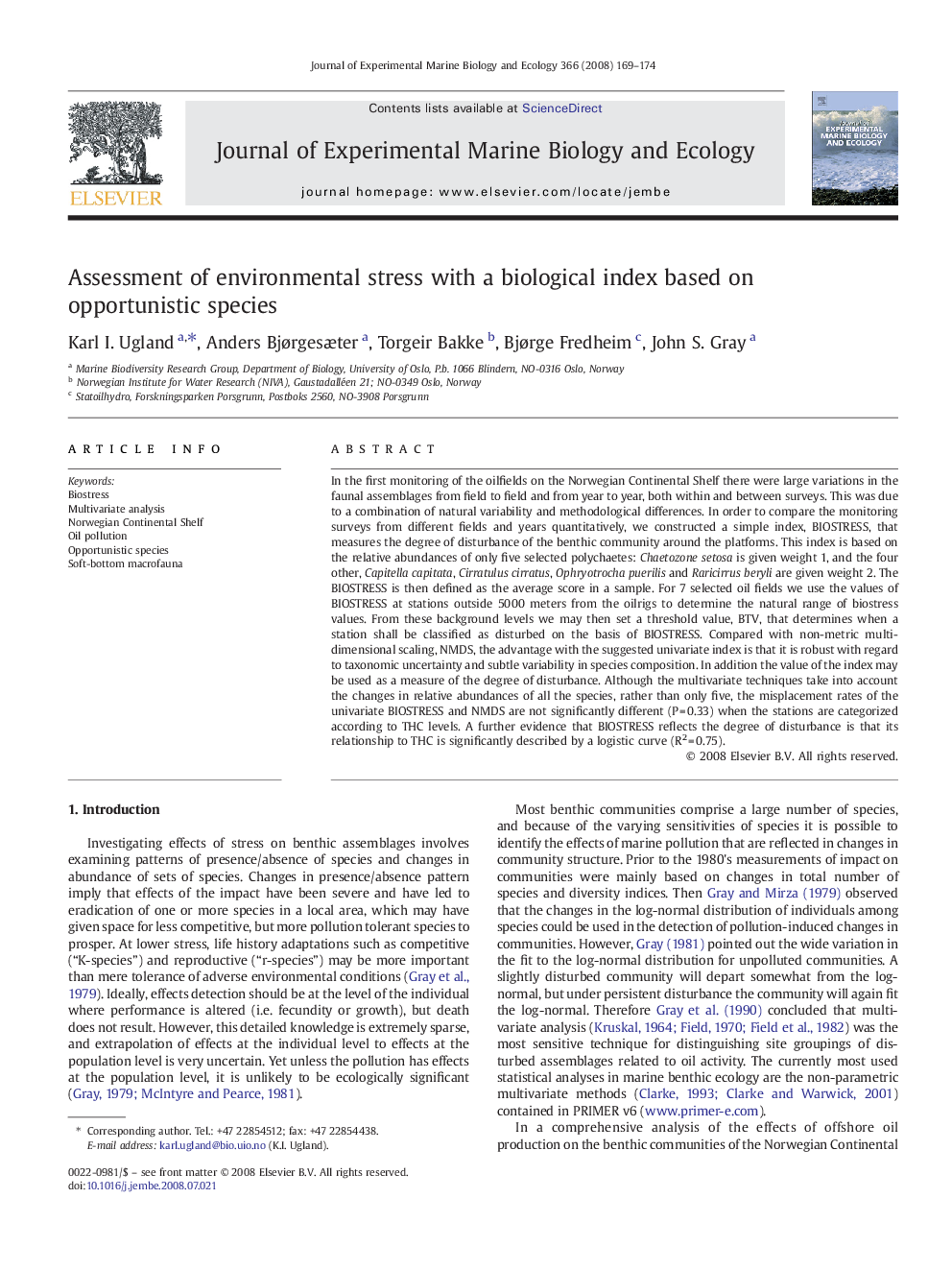| کد مقاله | کد نشریه | سال انتشار | مقاله انگلیسی | نسخه تمام متن |
|---|---|---|---|---|
| 4397204 | 1618483 | 2008 | 6 صفحه PDF | دانلود رایگان |
عنوان انگلیسی مقاله ISI
Assessment of environmental stress with a biological index based on opportunistic species
دانلود مقاله + سفارش ترجمه
دانلود مقاله ISI انگلیسی
رایگان برای ایرانیان
کلمات کلیدی
موضوعات مرتبط
علوم زیستی و بیوفناوری
علوم کشاورزی و بیولوژیک
علوم آبزیان
پیش نمایش صفحه اول مقاله

چکیده انگلیسی
In the first monitoring of the oilfields on the Norwegian Continental Shelf there were large variations in the faunal assemblages from field to field and from year to year, both within and between surveys. This was due to a combination of natural variability and methodological differences. In order to compare the monitoring surveys from different fields and years quantitatively, we constructed a simple index, BIOSTRESS, that measures the degree of disturbance of the benthic community around the platforms. This index is based on the relative abundances of only five selected polychaetes: Chaetozone setosa is given weight 1, and the four other, Capitella capitata, Cirratulus cirratus, Ophryotrocha puerilis and Raricirrus beryli are given weight 2. The BIOSTRESS is then defined as the average score in a sample. For 7 selected oil fields we use the values of BIOSTRESS at stations outside 5000Â meters from the oilrigs to determine the natural range of biostress values. From these background levels we may then set a threshold value, BTV, that determines when a station shall be classified as disturbed on the basis of BIOSTRESS. Compared with non-metric multidimensional scaling, NMDS, the advantage with the suggested univariate index is that it is robust with regard to taxonomic uncertainty and subtle variability in species composition. In addition the value of the index may be used as a measure of the degree of disturbance. Although the multivariate techniques take into account the changes in relative abundances of all the species, rather than only five, the misplacement rates of the univariate BIOSTRESS and NMDS are not significantly different (PÂ =Â 0.33) when the stations are categorized according to THC levels. A further evidence that BIOSTRESS reflects the degree of disturbance is that its relationship to THC is significantly described by a logistic curve (R2Â =Â 0.75).
ناشر
Database: Elsevier - ScienceDirect (ساینس دایرکت)
Journal: Journal of Experimental Marine Biology and Ecology - Volume 366, Issues 1â2, 15 November 2008, Pages 169-174
Journal: Journal of Experimental Marine Biology and Ecology - Volume 366, Issues 1â2, 15 November 2008, Pages 169-174
نویسندگان
Karl I. Ugland, Anders Bjørgesæter, Torgeir Bakke, Bjørge Fredheim, John S. Gray,